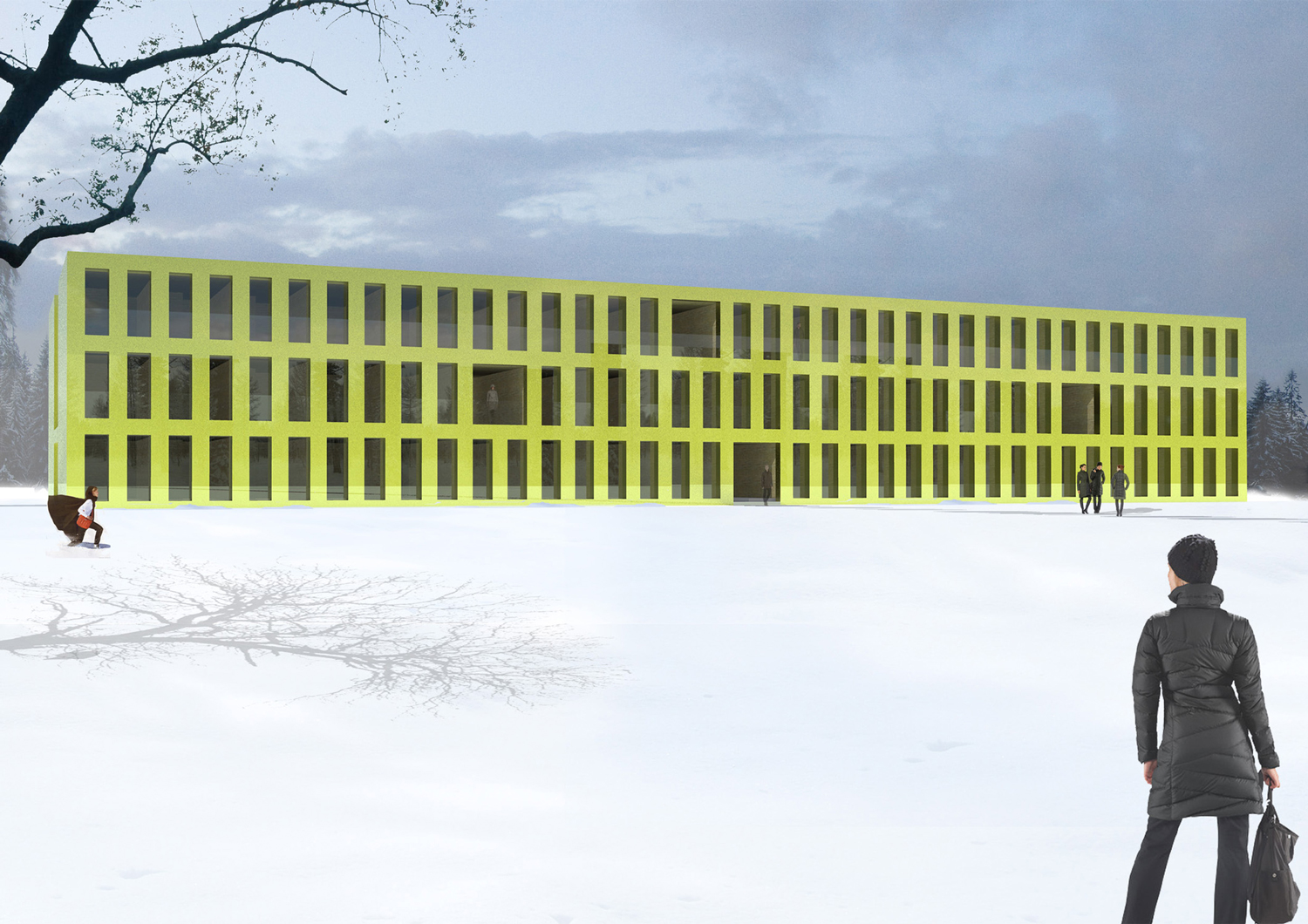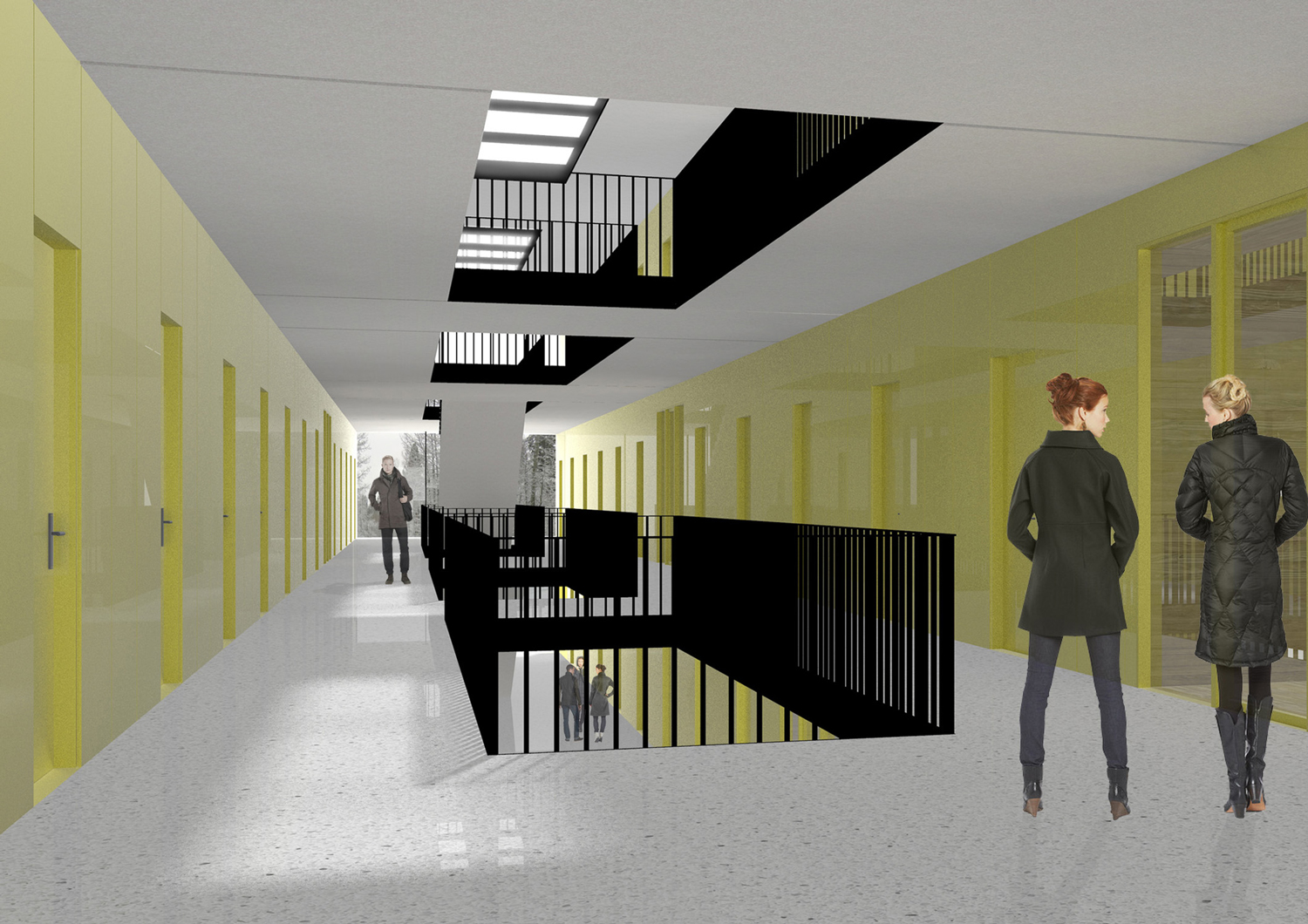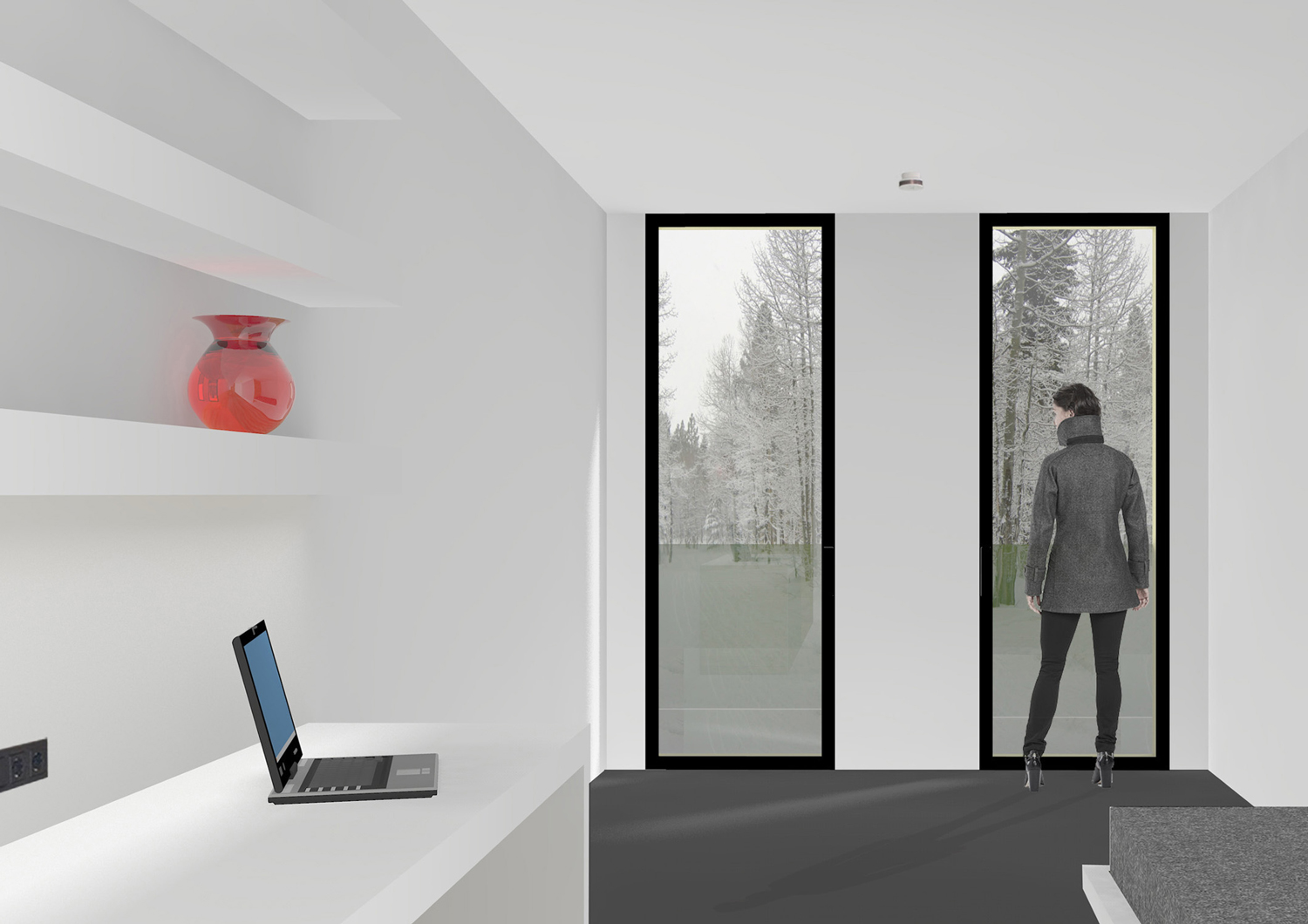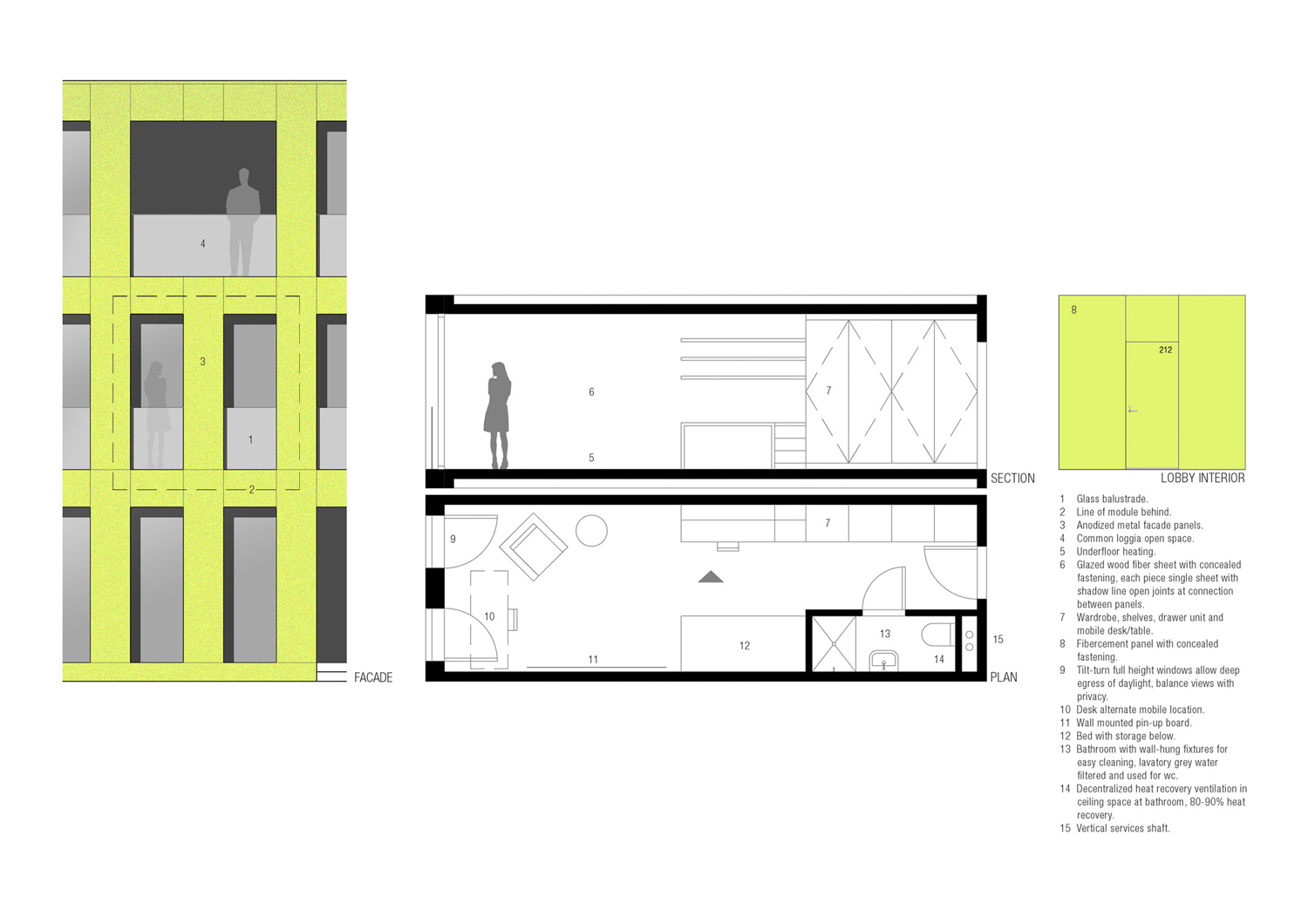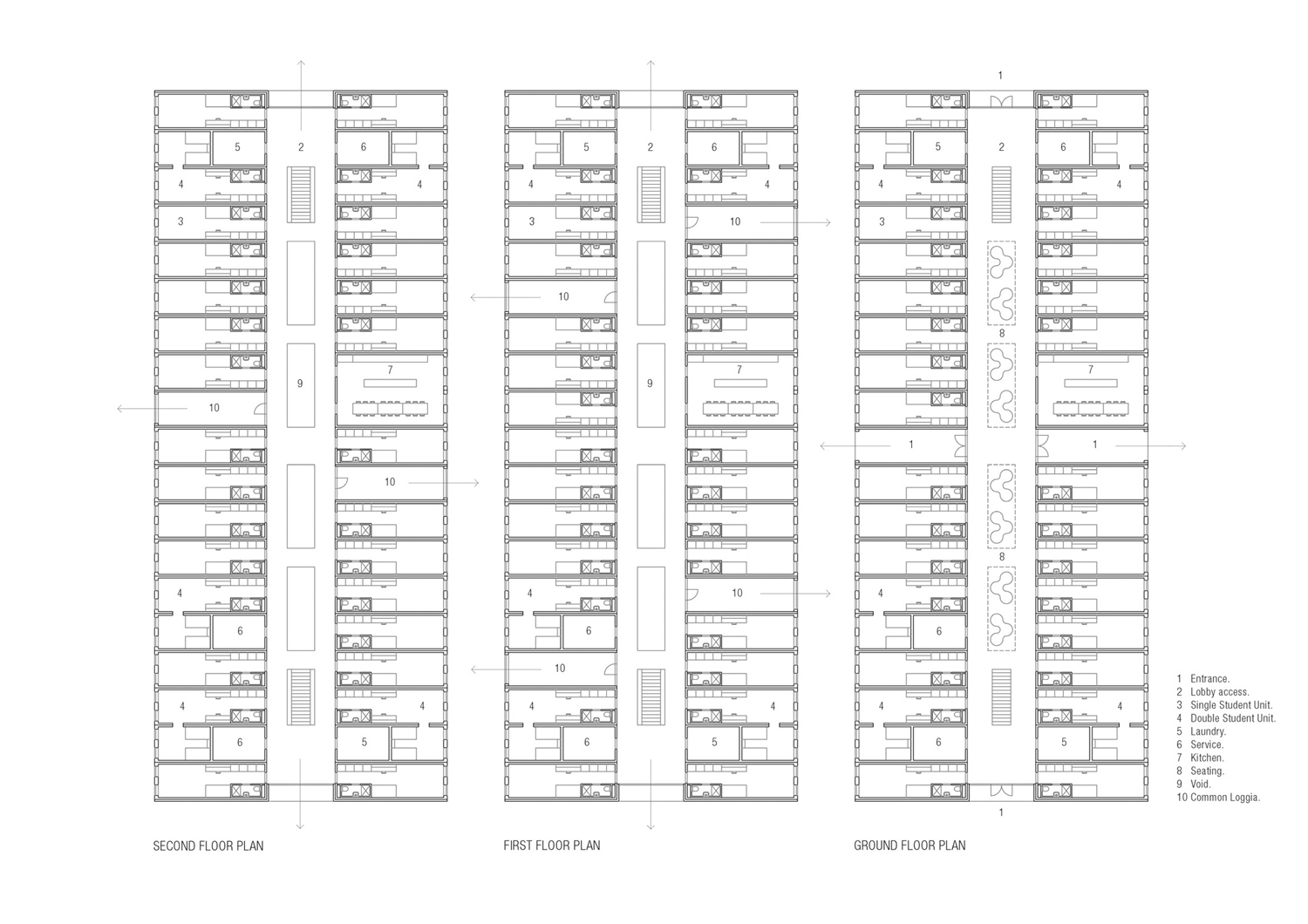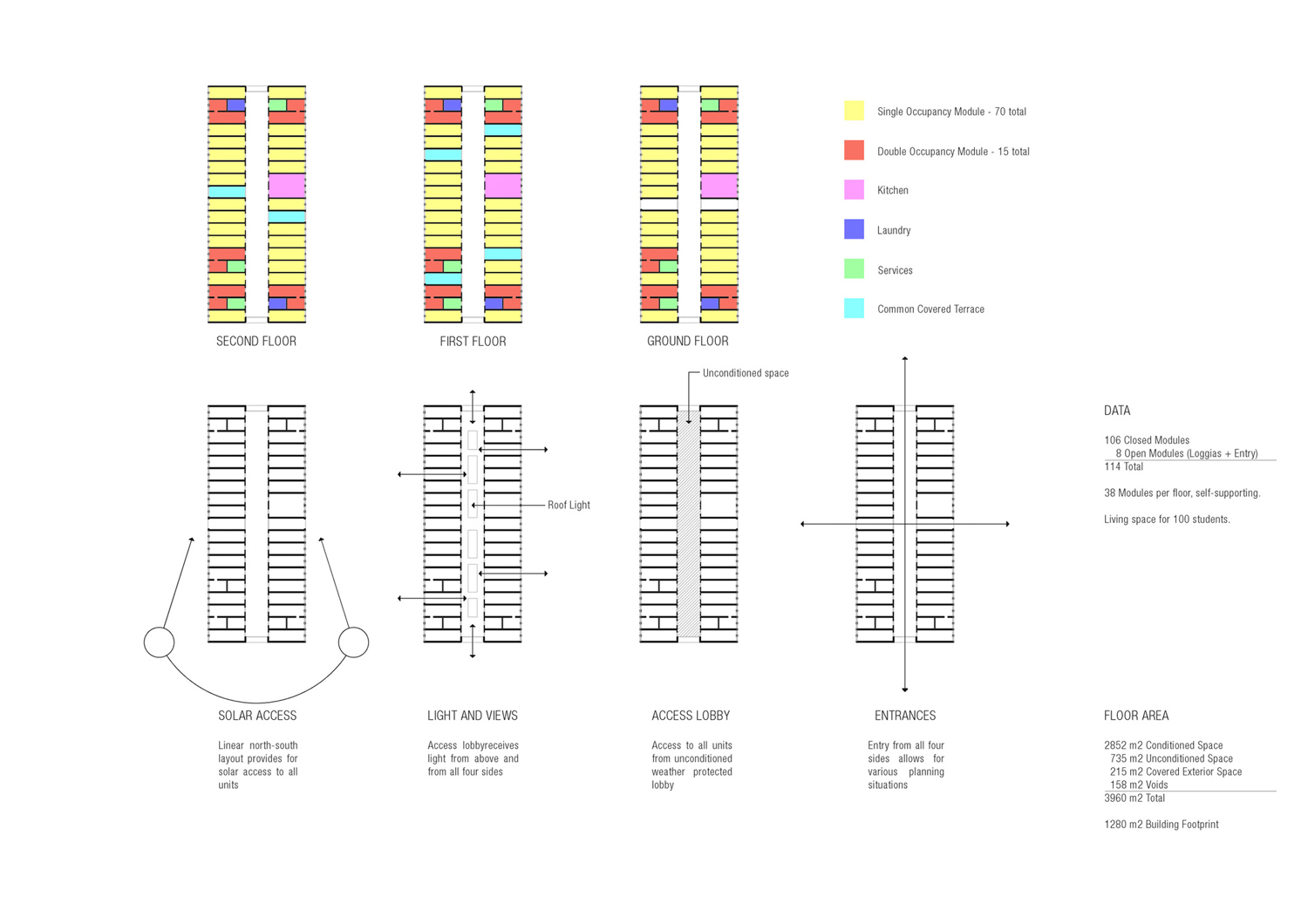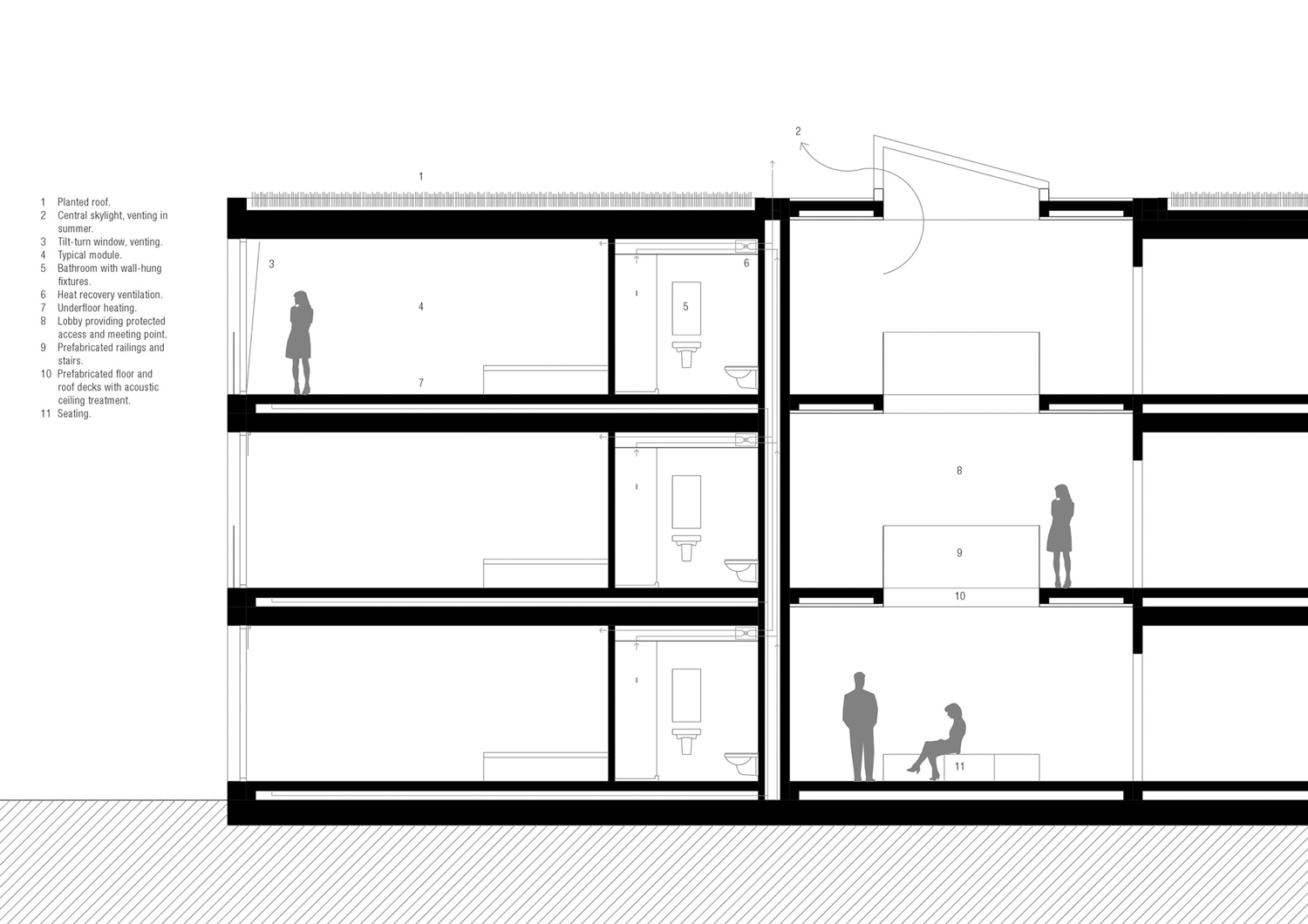1623-AMA-KUN.LT-2014
Client: UAB Ryterna
Status: Competition (2014)
Location: Kaunas, Lithuania
Climate: Continental, Temperate
Material: Metal
Environment: Urban
Visualizer: Studio
Scale: 3.960 ㎡ Medium
Types: Residence, Residential
Project to develop prototype for student-housing using prefabricated steel framed modules. The concept rejects the aesthetic of the stack of containers. Metal facade panels, attached in the field, redefine the rhythm of the facade creating a monolithic form. The building should be elegant and beautiful.
Two linear tracks separated by unconditioned atrium lobby access space. All modules are the same dimension, 9000x2990x3100; consisting of Single Student Occupancy unit, Double Student Occupancy unit comprised of 2 modules which includes either common Laundry or Service space, and common Kitchen unit consisting of 2 modules. All functions are contained within this one module dimension.
Three floors of stacked modules with prefabricated access deck for the atrium lobby and insulated roof and sidewall elements. Modules come complete with façade panels and fiber-cement panels in the atrium lobby attached in the field.
Passive House standard with compact building form, additional insulation at end elevations and roof, joints between modules sealed against wind penetration, high performance windows. Heat recovery ventilation retains 80-90% interior temperature. Low temperature under floor heating provides for comfortable interior environment. Each module has two floor-to-ceiling windows with internal roller blinds providing balance between day lighting and privacy, with an efficient 37% glazed area. Windows extend to ceiling allowing daylight to penetrate deep into the space. The lobby access is completely weather protected with daylight entering from above and at points along all four elevations; this unconditioned space provides a buffer zone for the entrances to each room. The linear layout of the modules allows for an east-west orientation of the building, which allows for passive solar access to all spaces.
The position taken is the creation of a building that is not visually made up of prefabricated elements, rather the creation of a building of solidity and permanence.
